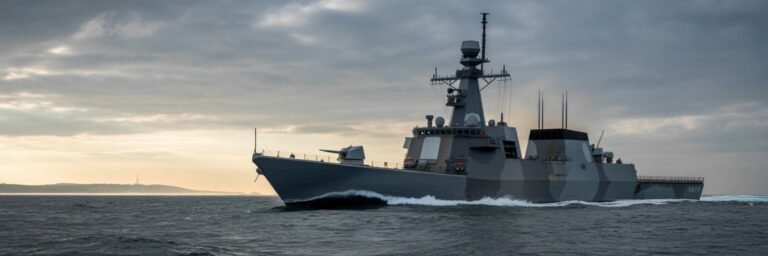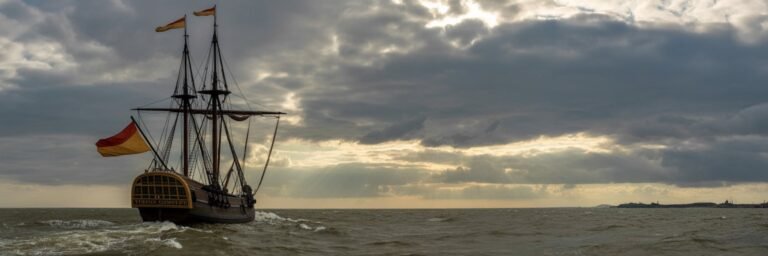INTRODUCTION
Naval warfare, the realm where battles are waged on vast, unpredictable bodies of water, has been a defining characteristic of human conflict since the earliest civilizations realized the strategic importance of controlling the seas. This historical lens affords a unique perspective, one that unravels the influence, significance, and enduring legacy of naval warfare in modern society. It is a tale of human ingenuity, technological advancements, potent symbolism, and enduring controversies, all wrought upon the canvas of the world’s oceans.
HISTORICAL BACKGROUND
While presumptions of naval warfare often evoke images of 20th-century battleships or futuristic submarines, the roots of maritime conflict extend into much older soils. Ancient civilizations like the Minoans and Phoenicians were pioneers of naval power, crafting ships using timber, fibers, and rudimentary tools in 6th Century BCE. Their reasons were myriad: trading, colonization, and inevitably, warfare.
The evidence of the Battle of Lade in 494 BCE between Persians and Ionians attests to early strategic naval warfare. However, it was the Greeks, during the Battle of Salamis in 480 BCE, who refined naval warfare tactics to an art form. Superior command strategies enabled the smaller Greek fleet to decimate the mightier Persian armada, a pivotal moment reshaping the balance of power in the ancient world.
Rome, during the Punic Wars (264-241 BCE), recognized the necessity of naval dominance against the maritime powerhouse, Carthage. Consequently, Rome built groundbreaking ships and developed effective marine warfare techniques, ultimately bringing Carthage to its knees.
THEORIES AND INTERPRETATIONS
As civilization advanced, naval warfare became an arms race of innovation. This was not merely about the superiority of ‘ships’ but the embodiment of national power, protective shield for overseas colonies, a conduit for vast trade networks and finally an instrument for projection of influence. Theorists like Mahan and Corbett proposed distinctive perspectives about seapower’s essence and its application in conflict.
Alfred Thayer Mahan, a 19th-century American naval officer and historian, asserted that maritime supremacy was pivotal to a nation’s rise to global standing. His theories influenced large-scale naval buildups, particularly evident in the Anglo-German rivalry leading into WWI. Mahan’s belief that decisive naval battles can determine wars’ results still echo in modern naval doctrines.
On the other hand, British theorist Julian Corbett emphasized maritime communication control over sea battles. He argued that a navy’s primary goal was safeguarding trade routes and cutting enemy supply lines. Today, these fundamentals guide naval strategy, particularly for nations reliant on maritime trade.
MYSTERIES AND CONTROVERSIES
The arc of naval warfare history is punctuated with enduring mysteries and controversies. The disappearance of the Mary Celeste, found adrift and abandoned in the Atlantic Ocean in 1872, remains an unsolved mystery that has fueled countless theories.
One of the fiercest controversies still surfaces around the sinking of the Lusitania in 1915 by a German U-boat, directly influencing America’s entry into WWI. It was debated whether the ship, presented as a passenger liner, was covertly carrying munitions for the Allies, making it a valid military target. This incident continues to stir debate regarding wartime ethics and the fine line separating civilians and combatants.
SYMBOLISM AND CULTURAL SIGNIFICANCE
Throughout history, ships and naval power have simultaneously symbolized national power, technological prowess, and exploration spirit. From Poseidon’s Trident to Britannia, sea-related iconography has been deeply rooted in various cultures.
In literature and popular culture, naval warfare has inspired numerous works. From the audacious sea battles in Homer’s ‘Iliad’ to the harrowing submarine warfare in Tom Clancy’s ‘The Hunt for Red October’, naval conflicts have provided a backdrop for narratives that explore human courage, strategy, and endurance.
MODERN INVESTIGATIONS
Modern exploration into naval warfare combines cutting-edge technology with archival digging. The raising of the Tudor warship ‘Mary Rose’, sunk in 1545, offered unprecedented insights into mid-16th-century naval warfare, as well as everyday life on military ships.
Today, advancements in underwater archaeology and sonar technology allow researchers to find and study sunken vessels from centuries ago. One notable example is the discovery of the USS Arizona, a battleship sunk during the attack on Pearl Harbor in 1941. Its investigation provides rich insights into WWII’s Pacific Theater, its strategies, and its tragic human cost.
LEGACY AND CONCLUSION
The legacy of naval warfare in modern society is far-reaching, continually shaping geopolitical conflicts or resolutions. Drawing lessons from history, nations today strive to maintain naval supremacy to guard their coasts, protect trade interests, or project global influence.
Moreover, it informs contemporary international maritime law, emphasizing non-hostile use of the world’s oceans, freedom of seas, and defining maritime zones like international waters and exclusive economic zones.
The study of naval warfare’s legacy compels us to look beyond mere military discourse. For it is a narrative of human innovation and adaptability, serving as a mirror reflecting the broader themes of power, global politics, technological development, and the grit to control earth’s last frontier – the vast expanse of the open sea. The layers of naval warfare’s enduring influence continue to permeate not just the waters, but the interconnected fabric of our modern society.






